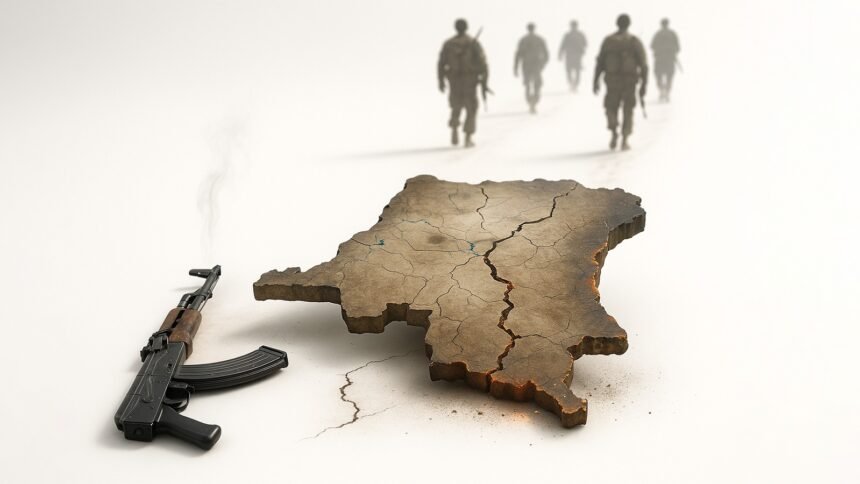Once again, guns are going silent in eastern Congo—at least on paper. The Democratic Republic of the Congo (DRC) and the M23 rebel group have agreed to a ceasefire following high-level mediation by regional leaders. It is, by any measure, a welcome development in a region that has seen little more than displacement, bloodshed, and broken promises for decades. But in a conflict as complex and deeply rooted as this, ceasefires are often just intermissions in a longer play of violence and mistrust.
The latest deal, brokered in Luanda and supported by Angola, Kenya, and the African Union, aims to halt hostilities in the North Kivu region, where fighting between the Congolese army and M23 rebels has displaced more than 800,000 people in the past 18 months alone. The M23 movement, composed mainly of Tutsi fighters, has staged one of the most effective insurgencies in recent Congolese history, capturing key towns and threatening the strategic city of Goma on multiple occasions.
This week’s ceasefire is not the first between the two sides. In fact, it’s the latest in a long series of agreements that date back to M23’s formation in 2012. But what sets this moment apart is both its urgency and its visibility. With international attention increasingly focused on Africa’s conflict zones—from Sudan to the Sahel—the DRC’s eastern war risks being forgotten unless such deals yield tangible progress.
According to the agreement’s initial terms, M23 fighters will withdraw from occupied zones under regional monitoring, while the Congolese army commits to halting offensive operations. A joint verification mechanism, possibly involving the East African Community’s regional force, is to be activated within days. But critics are already asking: who enforces the peace, and at what cost?
One of the biggest elephants in the room is Rwanda. The DRC accuses its smaller eastern neighbour of supporting M23—a claim supported by multiple UN reports and denied repeatedly by Kigali. Any durable peace must address Rwanda’s security concerns and alleged influence in eastern Congo, where porous borders, ethnic loyalties, and mineral wealth complicate every negotiation.
Congolese President Félix Tshisekedi, who faces re-election pressures and growing domestic discontent, hailed the ceasefire as “a step toward the pacification of our homeland.” But civil society groups in Goma and Bukavu are more skeptical. They’ve seen such pronouncements before, usually followed by more violence or half-hearted implementation.
The M23 leadership, for its part, insists it is acting in the interest of Tutsi communities facing marginalisation and state neglect. Whether that claim justifies the forced displacement of nearly a million people is another matter. For many in eastern Congo, the rebels are less freedom fighters than opportunists backed by foreign hands with eyes on the region’s minerals.
One thing is clear: the humanitarian toll of this conflict is staggering. According to the UN, nearly 7 million Congolese are currently internally displaced, a majority of them in the east. Camps in Ituri, South Kivu, and North Kivu are overwhelmed, and aid agencies face dwindling funds and growing insecurity. Every day the conflict continues, more children go without schooling, more families sleep under tarpaulin, and more lives hang in limbo.
Peace in Congo isn’t just a Congolese concern. The conflict has regional implications, fuelling instability in Uganda, Rwanda, Burundi, and even South Sudan. It threatens infrastructure projects, trade routes, and the credibility of continental institutions like the African Union and the East African Community.
That’s why this ceasefire matters, however fragile it may be. It offers a glimmer of hope, a pause for breath. But it also underscores how difficult peace-building really is in a region layered with ethnic tensions, foreign interests, and deep-rooted grievances.
What comes next will be telling. If the joint monitoring force is deployed transparently, if both sides honour withdrawals, and if displaced populations begin returning home, this ceasefire may yet prove more than a temporary reprieve. If not, the region risks plunging into another cycle of war—this time with even less international attention and more devastating consequences.
For now, the gunfire in eastern Congo has quieted. But whether that silence leads to healing or just hibernation remains to be seen.










